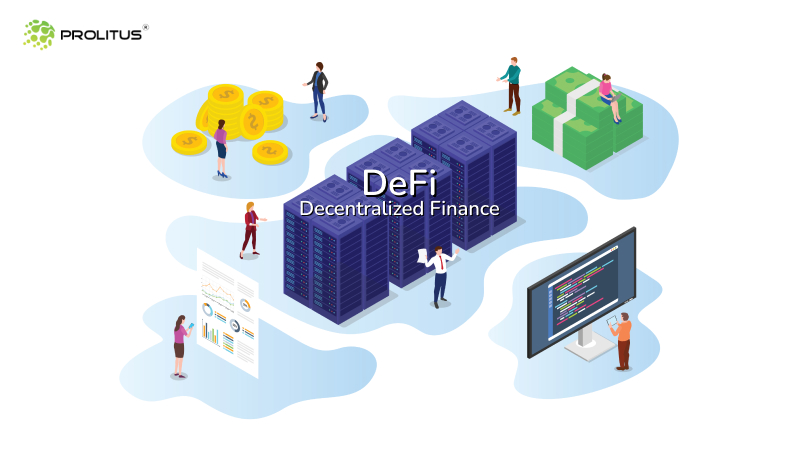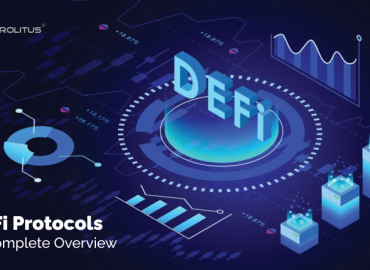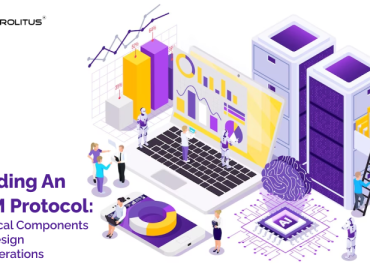Decentralized finance brought a wave of revolution in 2020 with the incredible success of Defi projects like UniSwap. It provided the world an option to be a part of decentralized finance and trading. Technically, Defi refers to decentralized applications that disrupt traditional financial services, unlock new economic primitives, and harness the power of blockchains.
But, the revolution began experiencing problems, as we experienced with Bitcoin (BTC). In response, the term “Defi 2.0” started gaining popularity to describe a new generation of Defi decentralized applications (DApps). Even though we are still in the infancy of Defi 2.0, we can see its beginnings. The blog will help you understand what Defi 2.0 is and why it is needed to solve existing problems in the Defi ecosystem.
What is Defi 2.0?
Decentralized Finance 2.0, short for Defi, is a movement that aims to upgrade and fix the existing problems in the Defi space. It is an entirely new phrase in the blockchain world that refers to a subset of Defi protocols.
Defi provided everyone an equal chance to perform transactions without any barriers. But, it still has some weaknesses that are necessary to address. For example, even Ethereum is upgrading to become Ethereum 2.0, which will have a proof-of-stake consensus mechanism. In addition, Defi 2.0 also needs to be robust to new compliance regulations that some governments plan to introduce.
For example, Defi 2.0 can provide insurance to liquidity providers to avert the risk of losing money (impermanent loss). The protocol will charge a small fee but give a greater incentive to invest in liquidity pools. Before going into the depth of the Defi 2.0 ecosystem, the blog will explore the limitations of DeFi that led to this revolution.
What are the limitations of Defi?
Defi 2.0 is a better version of the Defi model, aiming to leverage strengths to provide consumers with new and exciting options. We have discussed the limitations of DeFi 1.0 below.
- Scalability: Popular blockchains that experience high traffic and gas fees often provide slow and expensive services that make it cost-inefficient for users to perform transactions.
- Centralization: Decentralization is the core principle when discussing DeFi. Everyone should religiously follow it. But, many projects still don’t have DAO principles in place.
- Oracles: Even in 2022, some projects are unaware of oracles and refuse to integrate them into their platform. It results in hackers attacking the platform, resulting in heavy losses.
- Security is of utmost importance as users interact with smart contracts for all the services. They could likely lose money if they are unaware of the risks present in the DeFi space. Although there are security audits in place, they tend to become less valuable as updates occur.
- Liquidity: If you are willing to trade on decentralized exchanges (DEXs), the platform should have the liquidity to prevent altering the prices. Not just this, providing liquidity to a platform locks up funds that a user can’t use anywhere, creating capital inefficiency.
Why is DeFi 2.0 crucial?
The first generation of Defi focused more on the users; the DApps were inclined towards making the user journey seamless and flawless. But the newcomers have a specific business-to-business (B2B) focus. Therefore, Defi 2.0 protocols are targeting the next wave of Defi apps to safeguard the sector’s long-term viability.
Some of the Defi 2.0 pioneers focus on developing long-term liquidity methods. For example, OlympusDAO is a protocol that builds a decentralized reserve currency and has announced Olympus Pro. This tool allows other Defi protocols to use the bonding mechanism to gain liquidity.
Defi 2.0 can help DAOs by building protocol-controlled value mechanisms. The new wave of Defi products will produce valuable tools enabling DAOs to compete with companies, reinforcing the movement’s B2B focus.
What are some use cases for DeFi 2.0?
Several projects are building platforms across many networks, including Ethereum, Solana, and other smart contract-capable blockchains. We will explore some of the widespread use cases of Defi 2.0 below.
Increasing capital efficiency
People deep into the crypto space would know that staking a token pair in a liquidity pool helps them receive LP tokens in return. Defi 1.0 allows you to stake the LP tokens with a yield farm to compound your profits. But, it locks millions of dollars in vaults to provide liquidity, decreasing overall capital efficiency.
Defi 2.0 is advanced as it uses yield farm LP tokens as collateral. Users can take a crypto loan from a lending protocol or mint tokens for their own use. Though the exact mechanism changes by project, you can benefit from LP tokens while still generating APY.
Smart contract insurance
Since news on Defi protocols has been in the headlines, it has become essential for an individual to evaluate a project before investing. Defi 2.0 makes it possible to get Defi insurance on specific smart contracts.
It will help if the smart contract is compromised and you have already insured your deposits for a fee. But remember that this will only be possible for a specific smart contract.
Self-repaying loans
Users that take a loan from a protocol are exposed to high-interest rates on repayments and liquidation risks. Defi 2.0 takes a hit on these problems by offering self-repaying loans where the lender can use interest earned to pay off the loan over time. They do not have any risk of liquidation, but if the collateral token depreciates, it will extend the time for repayment.
Impermanent loss insurance
A user who wishes to invest in a liquidity pool and start liquidity mining may incur financial losses if there is any change in the price ratio of the two tokens. New Defi 2.0 protocols are bringing new methods to reduce the risk. For example, imagine adding only one token to a single-sided LP, where the protocol adds their native token as the other side to help you accrue fees paid from swaps.
The collected fees will help to build up an insurance fund to secure your deposit against the effects of impermanent loss. Even if there are low fees to pay the losses, the protocol can mint new tokens to cover them.
What are the risks with Defi 2.0?
Like Defi 1.0, Defi 2.0 shares many of the same risks that can potentially cause damage to the protocols and individuals; let’s explore some of them to stay vigilant at all times.
- Although firms audit the majority of the smart contracts, they do not provide a guarantee of backdoors, weaknesses, or not being hacked. Hence, it is essential to research your level and understand that investing involves risk.
- Governments are keen to use the DeFi ecosystem for their good. But, it could also involve bringing regulations and laws for security and stability to crypto.
- While Defi 2.0 has introduced the concept of smart contract insurance, it still poses a considerable risk for anyone who wants to do liquidity mining.
- Users will not be able to withdraw their staked assets if the website of a Defi project goes down. However, they can withdraw their funds if they have the technical expertise to interact with smart contracts. Hence, locating the smart contract on a blockchain explorer is advised.
Final Thoughts
Defi 2.0, the generational change in decentralized finance, is progressing steadily and pushing decentralized finance forward. The first phase of Defi gave tremendous learning and advice to users not to use financial products they don’t fully understand.
Defi 1.0 had numerous accomplishments and blunders that taught us lessons to be adept. Defi 2.0 is still the new branch; we must wait and see what it fully delivers on its promises.
Why should you choose Prolitus for developing Defi solutions?
Politics has a professional team of blockchain developers with hundreds of hours of experience developing DeFi solutions. Our expert team has catered to clients worldwide to produce results that stand the test of time and tide. As a result, politics is the one-stop destination for the best-decentralized finance (Defi) solutions.
The Prolitus team has expertise in building a Defi ecosystem and timely delivery of all the solutions. We also provide exclusive collaboration with our internal team for better collaboration. So get in touch with our team for all your Defi development needs!
Frequently Asked Questions (FAQs)
Q1. What is Defi 2.0, and why does it matter?
Ans. Decentralized Finance 2.0, short for Defi, is a movement that aims to upgrade and fix the existing problems in the Defi space. It is an entirely new phrase in the blockchain world that refers to a subset of Defi protocols.
Q2. Is Defi 2.0 sustainable?
Ans. The 2nd generation of Defi promises to be a more sustainable ecosystem. It combines liquidity, interconnectedness, and sound governance to make it more sustainable on a larger scale.
Q3. What does DeFi stand for?
Ans. Defi is short for Decentralized Finance, and it uses emerging technology to remove third parties in financial transactions. Software, stablecoins, and hardware that enable the development of applications are components of DeFi.





